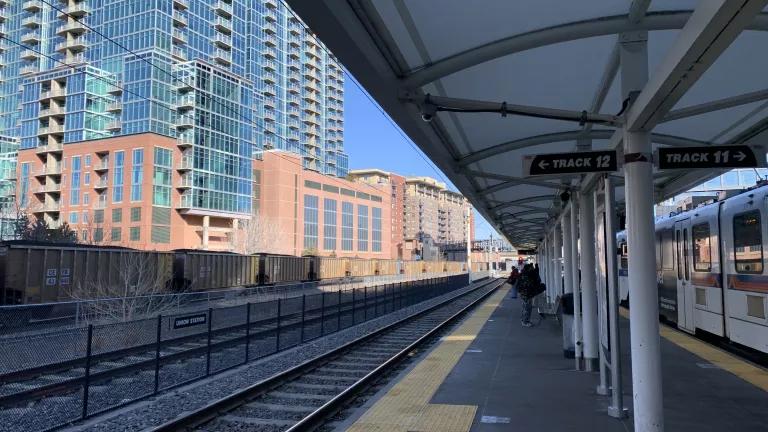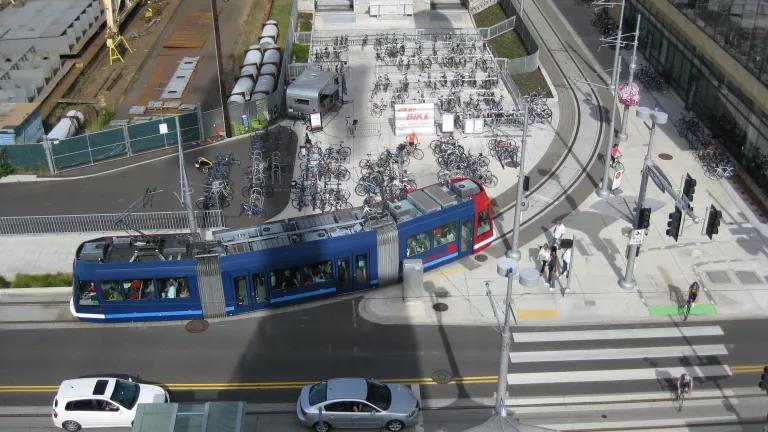Can Reconnecting Communities Repair the Breach
The negative effects of highways on communities have been well-documented. At long last, the U.S. Department of Transportation is moving to correct this injustice.

I-81 Elevated Syracuse, NY
Doug Kerr, Flickr
The effects on the real lives of people from the construction of the interstate highway system have been well-documented. While particularly infamous examples exist in Saint Paul, Syracuse, New Orleans, and Los Angeles, the full list is long. While the specific details differ, the story remains the same: homes and businesses taken from Black and Brown families, cratering property values, historical trauma, and worsening air quality to name only a few.
At long last, the Department of Transportation (DOT) is moving to correct this injustice. Transportation Secretary Pete Buttigieg announced the first-of-its-kind Reconnecting Communities pilot program on June 30, which has been eagerly anticipated by transportation advocates and community-based organizations.
Created by the new bipartisan infrastructure law, the program will invest $1 billion over five years to reconnect neighborhoods and communities that have been cut off from opportunity by transportation infrastructure. It is the first large-scale, deliberate attempt by the federal government to, in DOT’s words, “rectify harm caused by roadways that were built primarily through lower-income, Black communities after the 1950s creation of the interstate highway system.”
This program is a worthy encapsulation of the infrastructure law’s promise. At a recent webinar for stakeholders, DOT accurately described reconnecting communities as a “principle not just a program” and we hope that the principles from it embed themselves in all of DOT’s programs and investments, and that state transportation authorities do the same.
Eligible applicants for this new program include states, local units of government and (importantly!) non-profit organizations. The Notice of Funding Availability states that preference will be given to applications from “economically disadvantaged communities, especially those with projects that are focused on equity and environmental justice, have strong community engagement and stewardship, and a commitment to shared prosperity and equitable development.”
The variety of transformative solutions to knit communities back together can include: high-quality public transportation, infrastructure removal, pedestrian walkways and overpasses, capping and lids, linear parks and trails, roadway redesigns and complete streets conversions, and main street revitalization. The program announcement emphasizes the importance of community participation in developing plans and projects, and requires applicants to demonstrate that they have a robust plan to mitigate any possible displacement from projects constructed with these funds.

Embarcadero streetcar where elevated freeway used to be
Transportation projects are big-ticket items and often require multiple sources of funding. To assist grantees in achieving their goals, DOT has established a unique process called “Reconnecting Extra” in which successful grant recipients will be supported in accessing additional DOT funds. Additionally, DOT intends to encourage states to use their formula dollars to fund projects that reconnect communities. NRDC has written about this before: States directing their formula funds – which are the lion’s share of transportation funding from the infrastructure law – is one of the most important actions states can take to ensure we get the promised climate and equity outcomes from the infrastructure funding.
Additionally, DOT also launched the Thriving Communities Initiative to provide technical assistance and hands-on planning support for transformative infrastructure projects that serve disadvantaged communities. This includes a new DOT Navigator to provide better access to technical assistance programs across the Department, and a new program to provide capacity building support to communities. U.S. Housing and Urban Development is providing complementary technical assistance as part of the Thriving Communities program to improve the coordination of housing and transportation planning to advance residents’ access to opportunity and increase housing supply.
We can both be hopeful for this new program’s success and be clear-eyed about the hole we have dug. Given the substantial need for projects that will help heal and repair neighborhoods torn apart by ill-advised roadbuilding, the Reconnecting Communities pilot program as originally proposed by President Biden was (a) not a pilot, and (b) a $20 billion program. While the current $1 billion allocation is certainly less than hoped for, it remains a significant show of support to all the resident-led initiatives around the country – often an unlikely mix of community-based organizations, local officials, and developers -- that have been patiently working to creatively restitch these neighborhoods by creating people-centered places.
This historic new infrastructure law should serve as a bridge between communities, not tear more neighborhoods asunder. Because after all transportation infrastructure is not an end in itself. It’s just a means to an array of ends we all care about - commuting to work, getting to school, shopping, doctor’s visits, you name it. Transportation planners and engineers now have the resources to help us get there, ensuring that all people, of all abilities, can safely and affordably connect to opportunity. And that includes being cognizant and clear-eyed about remedying harms done during transportation’s checkered past, especially in the context of the $1.2 trillion infrastructure law.
Please share this opportunity with local governments and community-based organizations. It will be critical for the Administration and Congress to see a robust response to this opportunity from everywhere.



